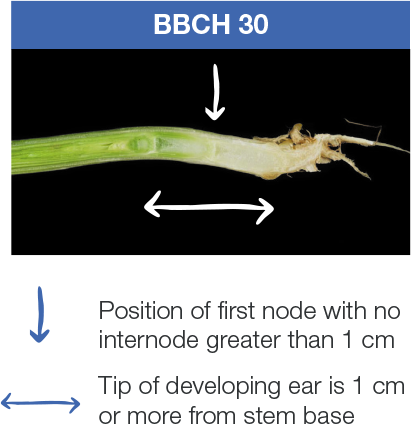Staging your cereals for a Moddus application
3 avril 2023
There are two types of lodging that threaten cereal crops: root lodging and stem lodging. Here in Canada, stems are usually to blame for a lodged crop – that’s why it’s vital that you stage your crop properly to get the most out of an application of Moddus® plant growth regulator (PGR).
A Moddus application at BBCH 30-32 is ideal. Apply Moddus too early or too late and you’ll miss your chance to strengthen and thicken stems where they’re most vulnerable to lodging.
Here’s how to tell if your crop is ready for a Moddus application.
1. Identify the main stem, then count the leaves on it.
- Leaves grow on alternate sides of the main stem, with odd numbered leaves growing on the left side and even numbered leaves growing on the right side.
- Your crop is at BBCH 30-32 when you can see five or six leaves.
- Be sure to include any missing or dead leaves in your count.

2. Count nodes and internodes on the main stem.
- Nodes are small bumps that can usually be seen or felt along the main stem and are counted up from the plant’s root.
- Internodes are the smooth stretches of plant tissue between nodes.
- At BBCH 30, you should see one node and one internode measuring no more than 1 cm long from the base of the plant.
- At BBCH 31, the first internode will be at least 1 cm long, while the second internode will measure less than 2 cm long.
- At BBCH 32, the first internode will be at least 1 cm long, the second internode will be more than 2 cm long, and you should see two notes on the main stem.



You should be able to observe nodes in the above-ground portion of the plant. If your plants have the correct numbers of leaves and tillers but you can’t find any nodes, slice along the length of the main stem to confirm that stem elongation is occurring.
Looking for more staging tips? Watch this video demo!